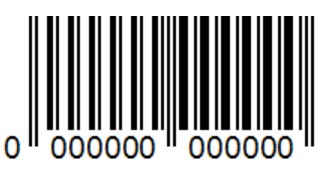References
Setiawan, R., Sudarmadji, Mulyadi, B.P., Hamdani, R.H. 2019. Preferensi Habitat Spesies Kerang Laut (Molusca: Bivalvia) di Ekosistem intertidal Tanjung Bilik Taman Nasional Baluran, J. Of Science and Technology. 8 (3): 165-170.
Sarong, M.A., Rijal, M., Hafinuddin, Saputri, M., Musrawal, S., Rudi. 2020. Bioda Dasar Perairan Ekosistem Mangrove Kabupaten Aceh jaya Provinsi Aceh. Jurnal Biotik. 8 (1): 1-10.
Rakmawati & Ambarwati, R. 2020. Komunitas Bivalvia yang Berasosiasi dengan Kerang Lentera (Brachiopoda: Lingulata) di Zona Intertidal Selat Madura. J. Riset Biologi dan Aplikasinya. 2 (1): 36-42.
Samir., Nurgayah, W., Ketjualan, W. 2016. Studi kepadatan dan pola distribusi Bivalvia di kawasan mangrove Desa Balimu Kecamatan Lesalimu Selatan Kabupaten Buton”, Jurnal Manajemen Sumber Daya Perairan, 1(2), 169-181.
Sarong, M.A., Jihan,C., Muchlisin, Z.A., Fadli, N., Sugianto, S. 2015. Cadmium, lead and zinc contamination on The oyster crassostrea gigas muscle harvested from the estuary of lamnyong river, Banda Aceh City, Indonesia. International Journal Of The Bioflux Society, (5) 1: 9-16.
Iswahyudi., Kusmana, C., Hidayat, A., Noorachmat, BP. 2019. “Lingkungan Biofisik hutan mangrove di Kota Langsa, Aceh”, Jurnal Of Natural Resource And Environmental Managemen, 10(1). 98-110.
Tufliha, A.R., Putra, D.M., Amara, D.M., Santika, R.M., Oktavian, S.M., Kelana, P.P. 2019. Kondisi Ekosistem Mangrove di Ekowisata Karangsong Kapupaten Indramayu. Jurnal Akuatika Indonesia. 4 (1): 11-16.
Sara L. 2014. “Pengelolaan Wilayah Pesisir” Bandung: Alfabeta
Zarkasyi, M. M., Zayadi, H., & Laili, S. 2016. Diversitas Dan Pola Distribusi Bivalvia Di Zona Intertidal Daerah Pesisir Kecamatan Ujung Pangkah Kabupaten Gresik. Biosaintropis (Bioscience-Tropic), 2(1), 1–10.
Kelana, P.P., Setyobudi, I., Krisanti, M. 2015. “Kondisi habitat Polymesode erosa pada kawasan ekosistem mangrove cagar alam Leuweung Sencang”, 6(2) 107-117.
Indriyanto. 2006. Ekologi Hutan. Jakarta: Bumi Aksara
Odum, E.P. 1993. Dasar-dasar ekologi Gramedia, Jakarta.
Ita, Riniatsih & Kusharto, EW. 2009. Substrat dasar parameter oseanografi sebagai penentu keberadaan Gastropoda dan Bivalvia di Pantai Sluke Kabupaten Rembang. Jurnal Ilmu Kelautan. 14(1)
Purbanegoro, Triyoni. 2018. “Potensi Bivalvia sebagai bioindikator pencemaran logam diwilayah pesisir”, Jurnal Ilmiah Samudra Aquatik, 1(1), 6-11
Sarong, M. A., Rijal, M., Hanifuddin, H., S., M., Mursawal, A., & Hermi, R. 2020. Biota Dasar Perairan Ekosistem Mangrove Kabupaten Aceh Jaya Provinsi Aceh. BIOTIK: Jurnal Ilmiah Biologi Teknologi Dan Kependidikan, 8(1), 1.
Islami M. M. 2013. Pengaruh suhu dan salinitas terhadap Bivalvia. Jurnal Oceana, Volume XXXVIII No 2, 1-10.
Mawardi, A.L & Sarjani, T.M. 2021. The Habitat Characteristics Of Anadara granosa In The Mangrove Ecosystem In Langsa City, Aceh. Biotik: Jurnal Ilmiah Biologi Teknologi Dan Kependidikan, 9(1), 65.
Purnaini R., Sudarmadji., Purwo S. 2018. Pengaruh Pasang Surut Terhasap sebaran Salinitas Di Sungai Kapuas. Jurnal Teknologi Lingkungan Lahan Basah. 1(2), 021-029.
Irma Akhrianti., Dietrich, GB., Instrajad, S. 2014. Distribusi spasial dan Preferensi Habitat Bivalvia di Pesisir Perairan Kecmatan Simpang Pasak Kabupaten Belitung Timur”. Jurnal Ilmu dan Teknplogi Kelautan Tropis. 6(1), 171-185
Wahyuni, I. 2017. Biodiversitas Mollusca (Gastropoda & Bivalvia) Sebagai Bioindikator Kualitas Perairan di Kawasan Pesisir Pulau Tunda, Banten. Junal Biodidaktika 2(2).
Samson, E., & Kasele D. 2020. Keanekaragaman dan Kelimpahan Bivalvia di Perairan pantai waemulang kabupaten Buru Selatan. Jurnal Biologi Tropis 20(1), 78-86.







